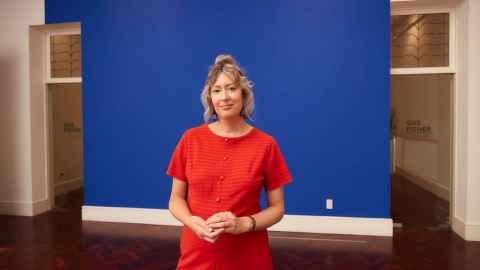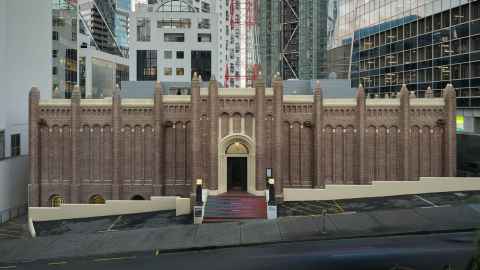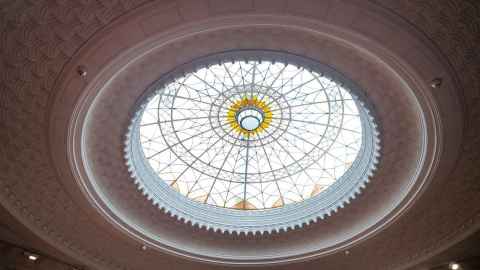My Space: Lisa Beauchamp
1 July 2025
Gus Fisher Gallery curator Lisa Beauchamp gave UniNews a tour of the gallery before the launch of its latest shows.

You can’t miss the Gus Fisher Gallery as you walk along Shortland Street, with its solid brick frontage, devoid of windows.
The building’s unique look is due to its heritage; opened in 1935 as Radio 1YA, it was the first purpose-built radio broadcasting studio in the Southern Hemisphere. Later it was used for television broadcasting, and its unbroken brick façade made it ideal for containing sound and minimising natural light.
The gallery occupies the building’s fourth floor (University dance and music studios are housed on other levels) and Lisa Beauchamp has been its curator since 2018.
Despite the building’s forbidding exterior, she says a lot of people are attracted through its doors. The gallery runs public programmes alongside its exhibitions, which typically run for three months, and provides activities for University and other students, including internships and volunteering opportunities.

UniNews: The building has an interesting heritage. What’s the background of the spaces that the gallery occupies?
Lisa: One of our gallery spaces is the room from which the first public Auckland TV broadcast was made on 1 June 1960. This room later became known as Studio 2 with smaller-scale productions filmed here, including the news and weather bulletins. A key tenet of our programme is our display of artists’ film and video, which draws on the original intentions for the space.
There are all sorts of heritage details that run through the gallery spaces. We have these native timber doors that are beautiful. They feature lines in the design that represent radio waves, which you also see represented in the glass ceiling dome in the central gallery space as you come in.
Then another of our gallery spaces was originally the women’s bathroom and changing room; it’s where the newsreaders would have changed before reading the evening bulletin.
What’s your favourite aspect of the gallery?
It has to be the Art Deco glass dome that greets visitors on arrival at the gallery. The architecture encourages you to look up, and the dome’s colours and ornate details referencing a sunburst motif dominate the room in the best possible way.
I never get tired of this space, but it’s also the most challenging to show work in. Still, it’s a good challenge.

What’s challenging about it?
I’m mindful that the building’s architecture is grand and could feel quite daunting to those new to the space or just wondering what it is.
The Dome Gallery is the first room people enter and it’s important we help them to feel comfortable and welcome. I always think ‘how can we make the space welcoming but also offer that wow factor?’. It’s not about competing with the inherent look of the gallery; it’s about how you can direct people’s attention towards the artworks and engage them in a different visual narrative.
Wall colour is a big factor. For our exhibition Derek Jarman: Delphinium Days last year, the spaces were painted a deep chocolatey brown, so we have the opportunity to transform our spaces through warm and vibrant colours for each exhibition that help to create an immersive atmosphere.
Through lighting and careful curation, our exhibitions all have a different feel that hopefully best expresses the content and the uniqueness of our building.
Personally, I’m not a fan of white-walled, elitist spaces – they can feel cold and unwelcoming and that’s not what we are as a gallery.
Caitlin Sykes
This article first appeared in the July 2025 issue of UniNews.